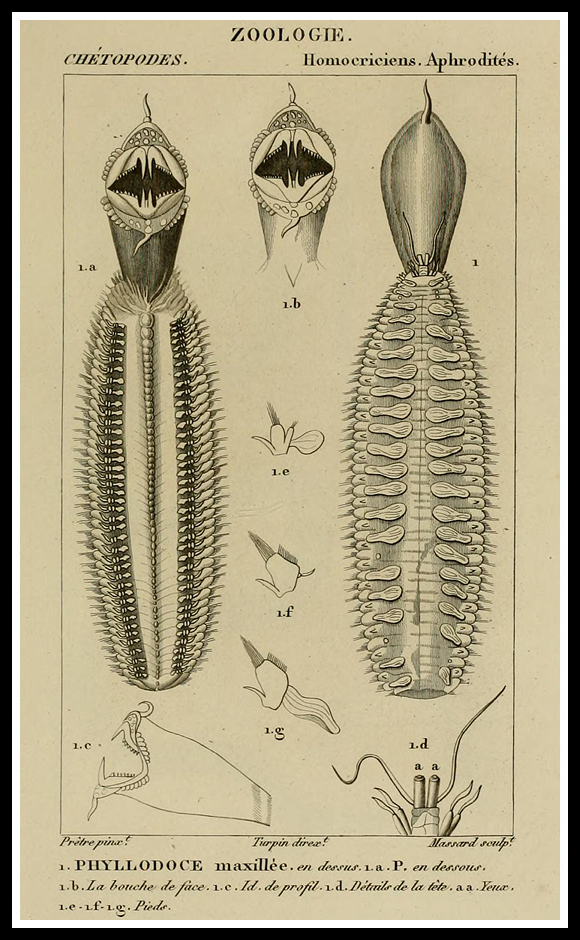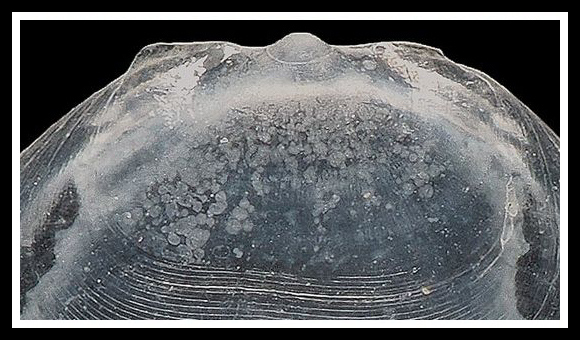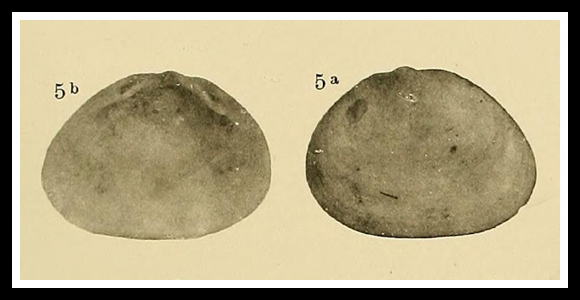
Commensal with the Polychaeta Polyodontes maxillosus (Ranzani, 1817) in the infralittoral and the circalittoral.
Original taxon: Lepton subtrigonum.
Synonyms: lacerum, trigonum.
Above: Polyodontes maxillosus (Ranzani, 1817).
This worm can reach the size of 85cm when fully extended.
« It is on the surface of the ventral integuments of the middle segments, almost always well beyond the first twenty, that we see the most visible of the small commensal bivalves in the form of very dark, vaguely circular and flat pellets, half a centimeter in diameter, often punctuated with white in the center of the valves, by wear of the blackish coating. […] Thus, a large male, collected in January 1960, west of the port jetty, of which only the first 103 rings could be brought back to the laboratory, had about sixty commensals over the 30cm length of its anterior section. […] Whatever their size and their location on the worms, these Lamellibranchs are attached to the integument by a very large byssus relative to the size of its producer. » – G. Deroux: “Rapports taxonomiques d’un Leptonacé non décrit ‘Lepton subtrigonum’ Jeffreys (nomen nudum - 1873)”, Cahiers de Biologie Marine vol. 2(2), Roscoff 1961, p.101-102.

« The external appearance is made very characteristic by the thickness of the black or dark brown coating which thickens the outline and gives the whole of the extremely flattened animal its appearance of a lenticular pellet by blunting all the contours […]. However, a few adult individuals and almost all juveniles less than 3mm in size remain bare and transparent, or simply yellowed by a rusty-looking beginning of the cover.
The shell […] presents a lot of analogy in shape with that of flattened Lepton, of the Lepton squamosum Montagu type. Like theirs, it is very compressed, its hook is even more reduced and even quite indistinguishable if there are traces of the outer cover. In addition, its rectilinear dorsal edge is much more developed and its solidity much greater. » – Ibid.
Above and below: 110m deep, one mile north of Sveti Andrija Island (Svetac), 14 miles west of Vis island, Split-Dalmatia Comitat, S. Croatia. Size: 4mm (max = 6mm).
Original pictures provided by R. Stanić (HR).The shell […] presents a lot of analogy in shape with that of flattened Lepton, of the Lepton squamosum Montagu type. Like theirs, it is very compressed, its hook is even more reduced and even quite indistinguishable if there are traces of the outer cover. In addition, its rectilinear dorsal edge is much more developed and its solidity much greater. » – Ibid.
Above and below: 110m deep, one mile north of Sveti Andrija Island (Svetac), 14 miles west of Vis island, Split-Dalmatia Comitat, S. Croatia. Size: 4mm (max = 6mm).
– (CC BY-NC-SA) –

« The external surface of each valve, stripped of its coating, is whitish and all the more translucent as the animal is younger. It is traversed by fairly irregularly spaced concentric streaks, some of which, more marked, seem to be able to indicate if not the exact age of the animal, at least the number of milestones in its physiological or ethological life. The outline of the prodissoconch, on the hook, forms the first of these streaks and is easily recognized at the level of the apex. » – Ibid.

« Shell very depressed, […] sub-trapezoidal, slightly inequilateral; anterior side longer; dorsal and ventral margins sub-straight and parallel; anterior margin obliquely truncated, posterior margin more convex, and both united at an obtuse angle with the dorsal margin. Umbones small, sharp, very little protruding, almost central, not inclined. […] Muscular prints well distinct, the anterior one oval, very elongated, the posterior sub-reniform. » – Op. cit. p.2.